Why do slugs appear in the greenhouse and how to get rid of them?

If you notice that holes have appeared on the greenhouse plants, it means that slugs are nearby. It is a nocturnal pest that loves high humidity and shade. That is why he tries to find shelter among weeds, garden trash and in greenhouses. What to do when unwanted guests appear and how to get rid of them forever - we'll talk in our article.
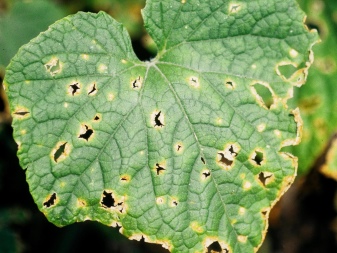
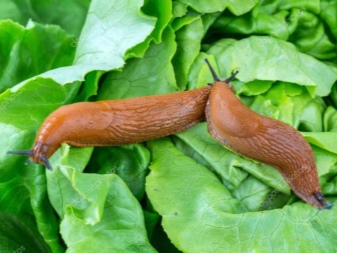
The main signs of the appearance
Slugs are the common name for a group of gastropods without a shell. Unlike snails, they do not have their own natural defenses, so they have to hide from the hot, dry weather in places with high humidity. It is the greenhouse for them that is the ideal habitat. These molluscs are active only at night, so they may not be noticed during the day.
But their appearance in the greenhouse can be indicated by a number of signs.
- Damage. Holes appear on the delicate leaves of plants, and eaten spots are noticeable on soft fruits.
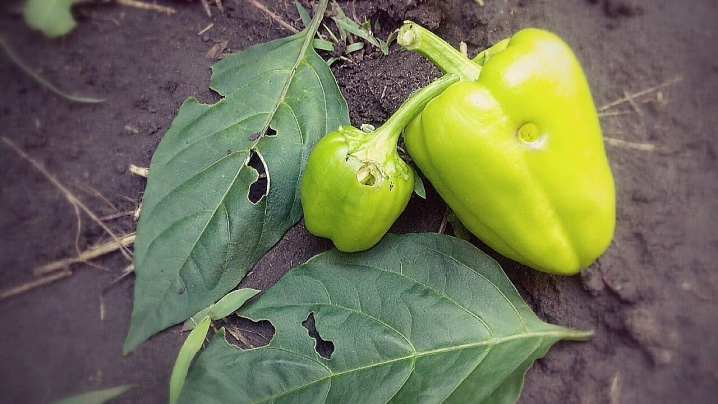
- Silvery footprints. In places where slugs move, flickering marks remain - they can be seen on leaf blades, as well as on the ground and walls of the greenhouse. This is mucus, it is produced by molluscs to protect the body from drying out and facilitate movement over rough surfaces.
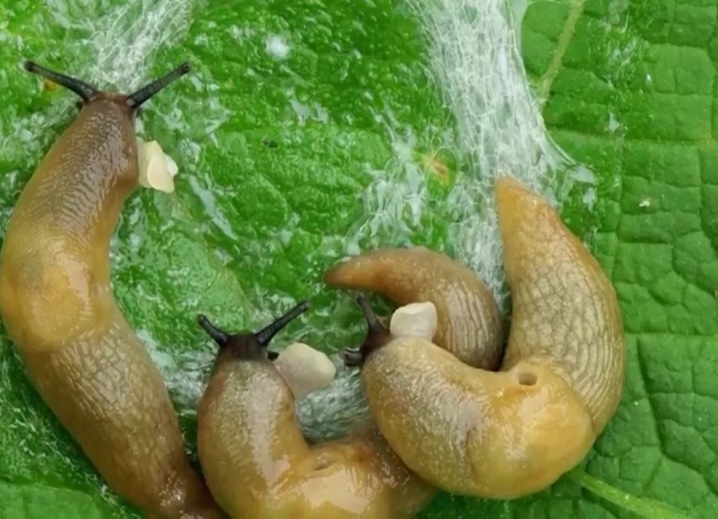
The food habits of gastropods are varied. According to research, they damage about 150 plant species. From the greenhouse assortment, they are mostly attracted by cucumbers, white and cauliflower cabbage, bell peppers, tomatoes, eggplants, peas, beans, as well as lettuce and strawberries.
Underground parts of beets and carrots can be attacked; onions, garlic, parsley and basil are affected to a lesser extent.

Causes
Humidity plays a huge role in the life of a slug. His body mostly consists of water - even if it loses up to 50% of the total body weight in high humidity conditions, it completely restores its water balance in 2-4 hours. Any decrease in the level of moisture leads to a short-term burst of activity, which mollusks use to find a reliable shelter. If one is not found, the gastropod falls into a daze and dies rather quickly.
Direct sunlight is harmful to molluscs, so greenhouses are ideal habitats for them. Moderately warm temperatures and high levels of humidity are maintained here, and the earth is not allowed to dry out. Thanks to the shelter, gastropods feel comfortable here throughout the year.
Shellfish usually enter the greenhouse with the ground. This can happen when renewing the soil, as well as when planting a new plant with an earthy clod. They can also get inside through the open doors of the greenhouse if there are no obstacles in the path of movement.
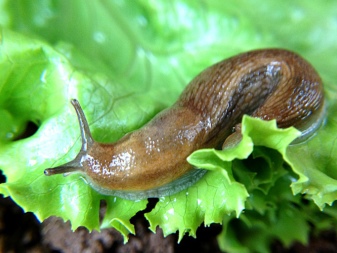

What harm can they do?
Despite their high fertility, slugs prefer to keep in small clusters. Nevertheless, they can cause considerable damage to horticultural crops. The reason for this is the gluttony of the gastropods. Just a few individuals can spoil an entire garden of cabbage or bell peppers in a matter of days.
In addition, the saliva of this mollusk contains components that cause rotting of the fruit.Even if the gastropods eat the shoots adjacent to the fruit, and then leave the plant alone, it will still begin to rot. Moreover, this process is irreversible.
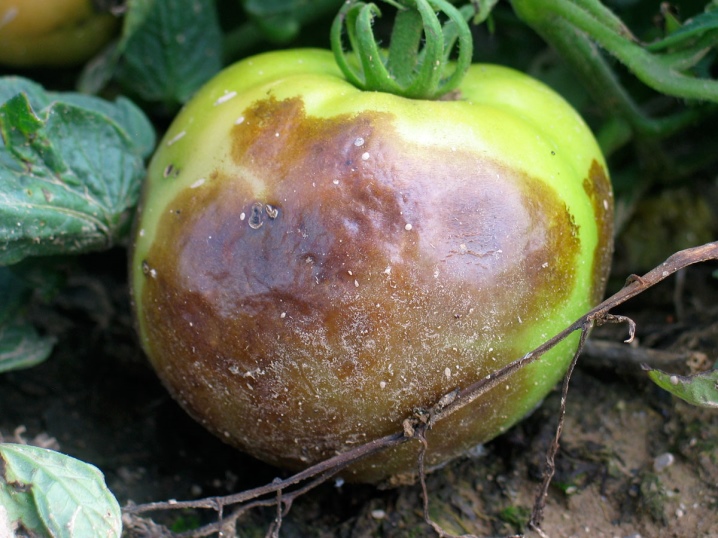
The land in which the slugs have settled is also not safe. Even dying, they leave a reserve in the substrate for their offspring. As soon as new plants are planted in the garden, the mollusks immediately start their "dirty work". But the harm of gastropods does not end there either: moving from one plant to another, these creatures carry fungal and viral diseases, including powdery mildew. By spreading these pathologies in closed greenhouse conditions, they can very quickly destroy all plantings.
The danger of slugs increases because they multiply very quickly. They are hermaphrodites who can fertilize each other regardless of gender. At a time, one individual lays up to 30 eggs, and after two weeks new offspring appear from them. In one season, each individual lays up to 500 eggs, so the task of controlling pests becomes important for any greenhouse owner.
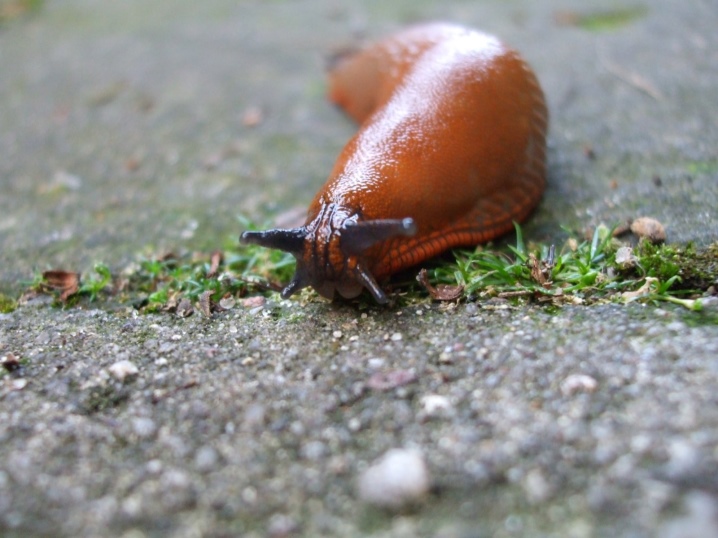
Mechanical and agrotechnical methods of control
Our grandparents considered manual collection of slugs to be the most effective method of dealing with slugs. This is a rather large pest, it is visible even with the naked eye, it is not able to move and fly quickly, so it can be easily and simply caught. And to make your work easier and speed up the collection of gastropods, you can build a trap.
Beer is considered a "catch" bait for slugs. To lure a gastropod, you need to take plastic containers and dig into the ground of the greenhouse in such a way that the edges of the container are below the level of the substrate. You need to pour a little intoxicated drink into glasses - slugs are its big admirers. They creep on the aroma from all parts of the greenhouse, even though the beer is toxic to them.
By the morning you can find many dead slugs, you just have to remove them and burn them.

In addition to beer, you can use other liquids - juices, syrups or fermented compotes. To attract insects, you can create a "false shelter". It is not difficult to make it: any board is greased with kefir and placed on the stones with the greased side down. Mollusks smell a pleasant smell for them and crawl, with the onset of day you can find a whole cluster of greenhouse pests.
A good effect in greenhouse conditions is given by laying out cucumber, tomato and lettuce leaves between the beds. At night, slugs crawl to the baits to hide, and at the same time feast on. It remains only to collect all this grass together with gastropods and destroy.
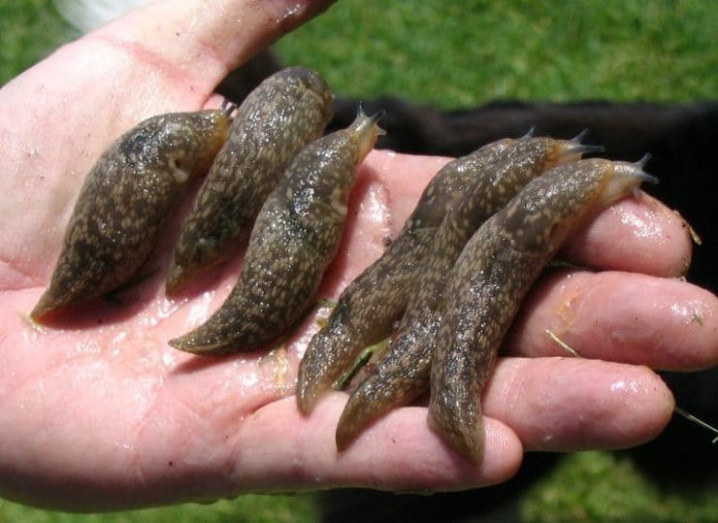
How can you fight?
For the most part, all preparations for slugs are granules that are evenly distributed over the soil surface. However, if you do not like chemical plant protection products, you can use effective folk methods.
Chemicals
The easiest way is to poison slugs with pesticides; you can buy them at any specialized store. Among the most effective drugs are:
- "Slime Eater", the granules of which through the skin enter the digestive tract of the gastropod and absorb all the moisture, this causes dehydration of the pest and leads to its rapid death;
- "Thunderstorm meta" - the agent destroys the digestive organs of slugs, the effect of the drug after treatment lasts 2-3 weeks.
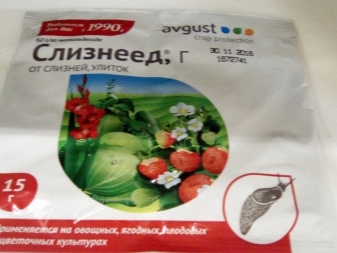

However, these tools have many disadvantages.
- The insecticide kills not only gastropods, but also pollinating insects.
- Some of the chemicals will inevitably end up in the substrate. In full, they decompose within 30 days, throughout this period, greenhouse plants will absorb poisons from the ground, which will remain in them forever and can cause poisoning when consumed.
- The processing itself is an unsafe procedure.Plants should be sprayed in closed clothing, with a respirator and goggles. For a week after treatment, it is undesirable for children and people with allergic and pulmonary diseases to be in the greenhouse.
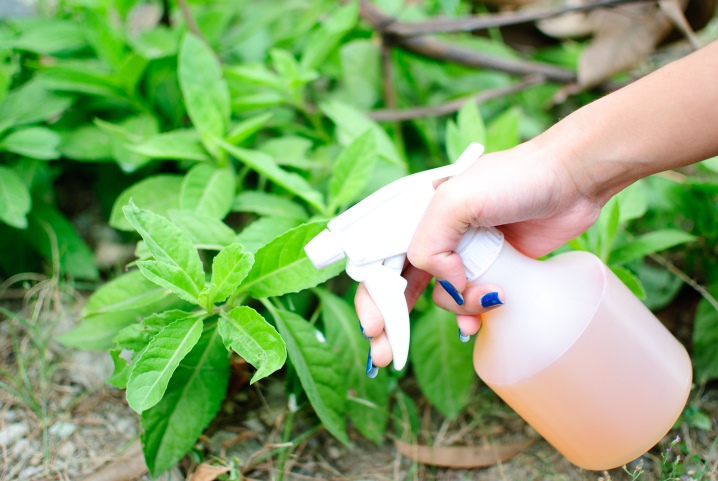
Biologics are considered a good alternative to pesticides.
- Ferramol Ch. It has a similar principle of action, but it does not harm beneficial insects.
- The use of special fertilizers can be a relatively gentle option. They do not contain pesticides, but they have components that are not to the liking of gastropods, most often they are calcined additives. However, when the greenhouse soil is oversaturated with calcium, soil salinization begins, and this can damage the seedlings no less than the invasion of mollusks. Therefore, they can be used exclusively at the initial stages of development, when greenhouse crops need additional feeding.
- The use of ferrous sulfate gives a good effect. - it is scattered in places where gastropods move and dust the perimeters of the beds with it. The drug is good because it is not washed off during irrigation, and slugs die from contact with it in a matter of seconds.
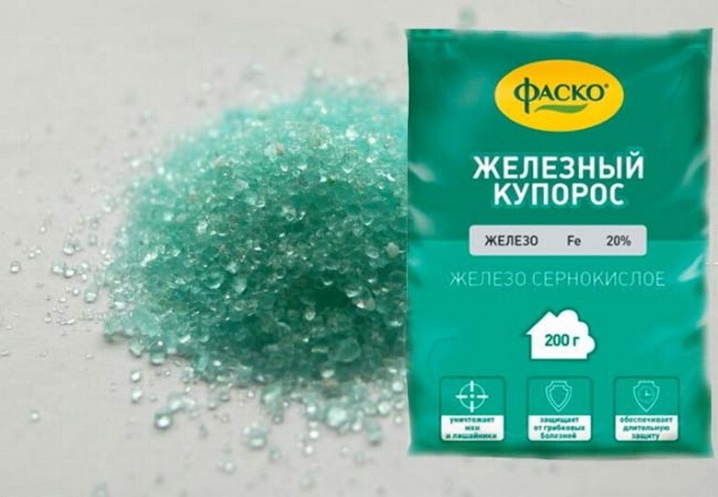
Traditional methods
Lovers of folk remedies most often use spices. The simplest kitchen seasonings can be a good remedy. The greatest effect is given by pepper, cilantro and rosemary - they are scattered in the aisles and in places of accumulation of gastropods. These spices irritate the delicate skin of slugs and leave burns on it, from which gastropods quickly die. The only drawback of this method is its short duration. Gastropods have learned to very quickly form immunity to spices, so the offspring of surviving mollusks no longer react to them.
If you sprinkle the mollusk with salt, you will notice that it seems to begin to "melt". That is why table salt is often used in greenhouses - it is sprinkled with it on the main migration paths. Mustard gives a good effect.
To get rid of slugs, half a pack of dry matter is diluted in a bucket of water and insisted for a couple of hours, and then the affected plants are sprayed.
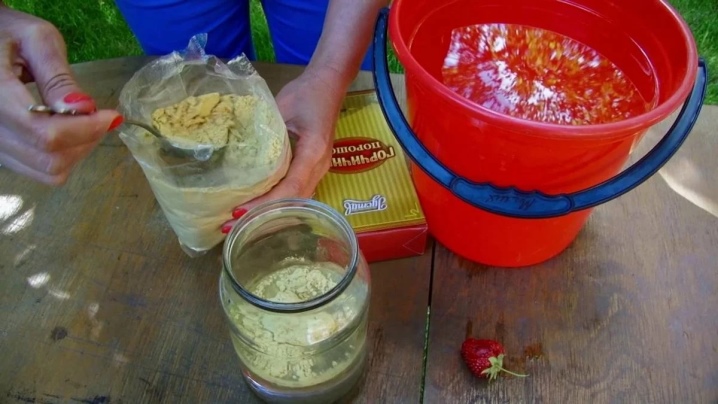
You can chase away the slug with a coffee solution. Caffeine has the most destructive effect on slugs: strong composition kills, and sweet scares away with its smell. However, it should be borne in mind that the concentrated coffee solution is capable of burning delicate green shoots and leaf plates, and in addition, it repels beneficial insects.
To combat slugs, you can resort to dusting the soil of greenhouse plants with chalk, tobacco dust or wood ash. A good result is obtained by treatment with an ammonia solution. And to scare off pests from tomatoes and peppers, dry nettles are spread under the bushes.
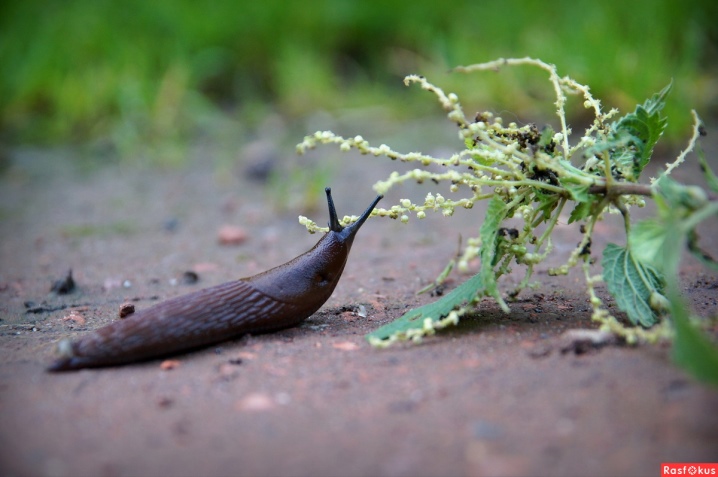
Prevention measures
Preventing the invasion of slugs in the greenhouse is much easier than removing them later. In order to prevent slugs from appearing in greenhouses, it is important to pay special attention to the processing and disinfection of new soil. You should buy land only in a checked place, and after distribution over the beds, it is imperative to treat it with a pale solution of potassium permanganate.
Agrotechnical prevention measures give a good effect.
- Regulation of humidity levels. Slugs prefer a humid environment, so you can fight them by adjusting the irrigation schedule to create an uncomfortable habitat for the molluscs. In greenhouse conditions, you can use a little trick, for example, after watering, sprinkle greenhouse beds with a thin layer of dry soil.
- Using natural enemies. In the natural environment, slugs are attacked by birds. It will not work to populate birds in a greenhouse, but you can get frogs or hedgehogs there - these creatures eagerly eat mollusks.
- "Harmful" neighbors. To protect the beds from gastropods, you can plant plants that are unpleasant for slugs next to fruit and vegetable crops.So, gastropods are frightened off by the specific aromas of rosemary, parsley, lavender, thyme, sage, and also marigolds. That is why greenhouse owners often plant these plants around the perimeter of the entire greenhouse or its main blocks.
- Obstacles. The bellies of molluscs are sensitive to rough and rough surfaces. Therefore, to protect the plantings, physical obstacles can be created that can prevent slugs from moving from one plant to another. For this, the aisles are sprinkled with fine gravel or crushed egg shells.
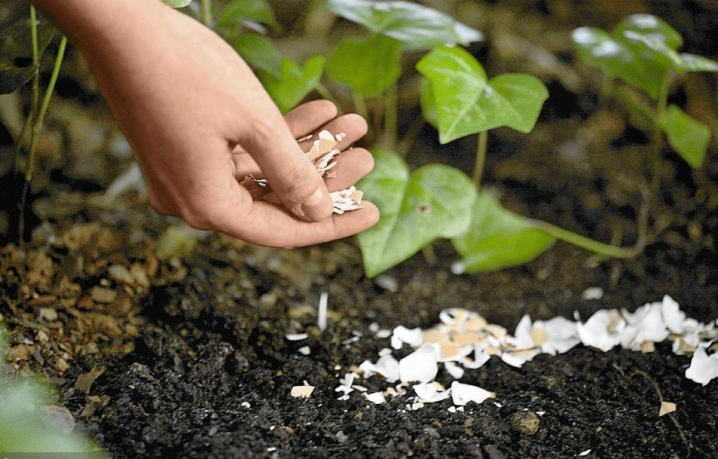
In addition, you need to adhere to the basic rules for growing plants:
- you can not plant seedlings too close to each other;
- it is important to create a ventilation system in the greenhouse that will allow excess moisture to be removed in a timely manner.
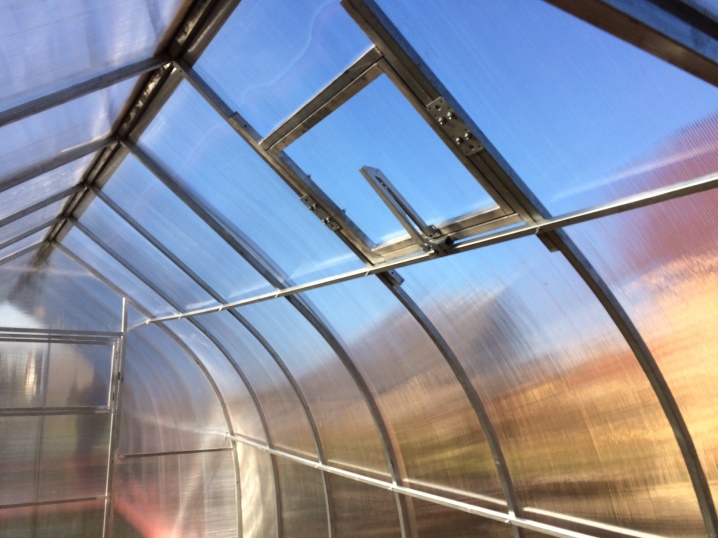










The comment was sent successfully.